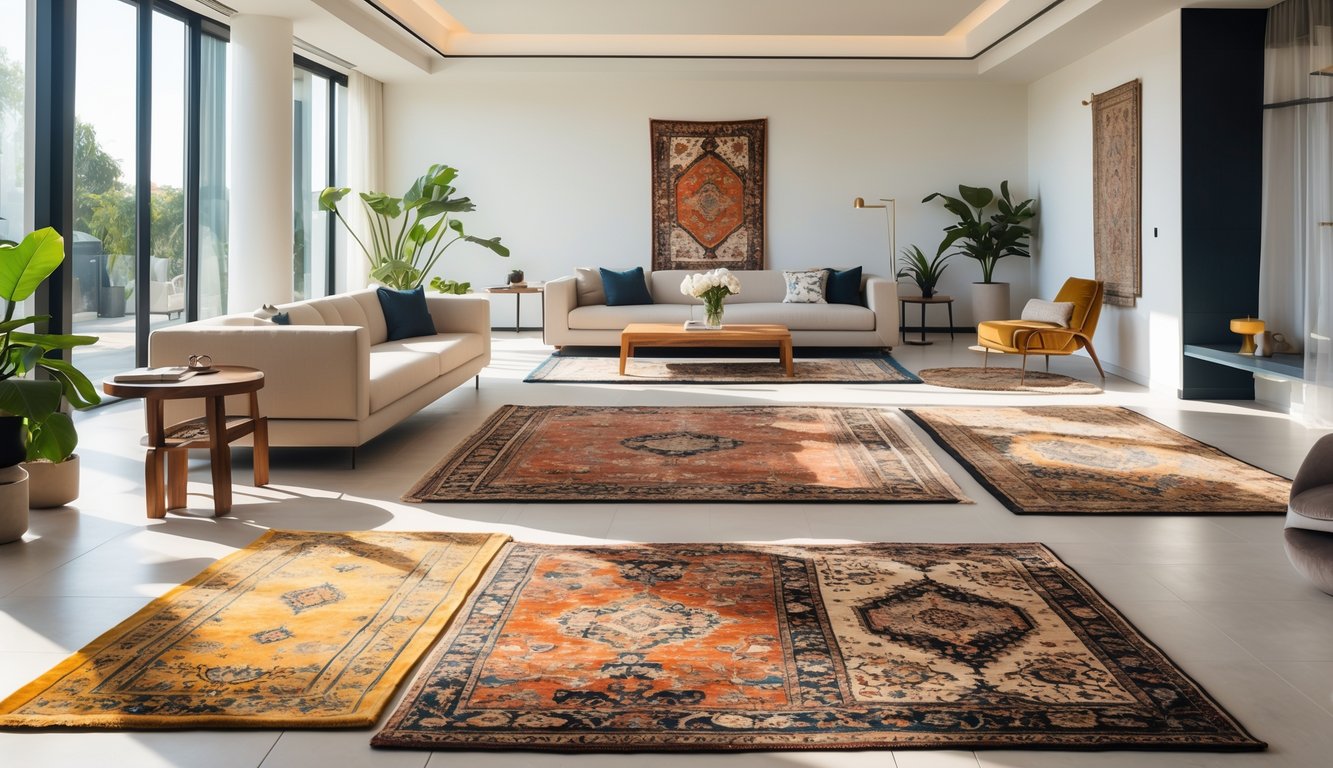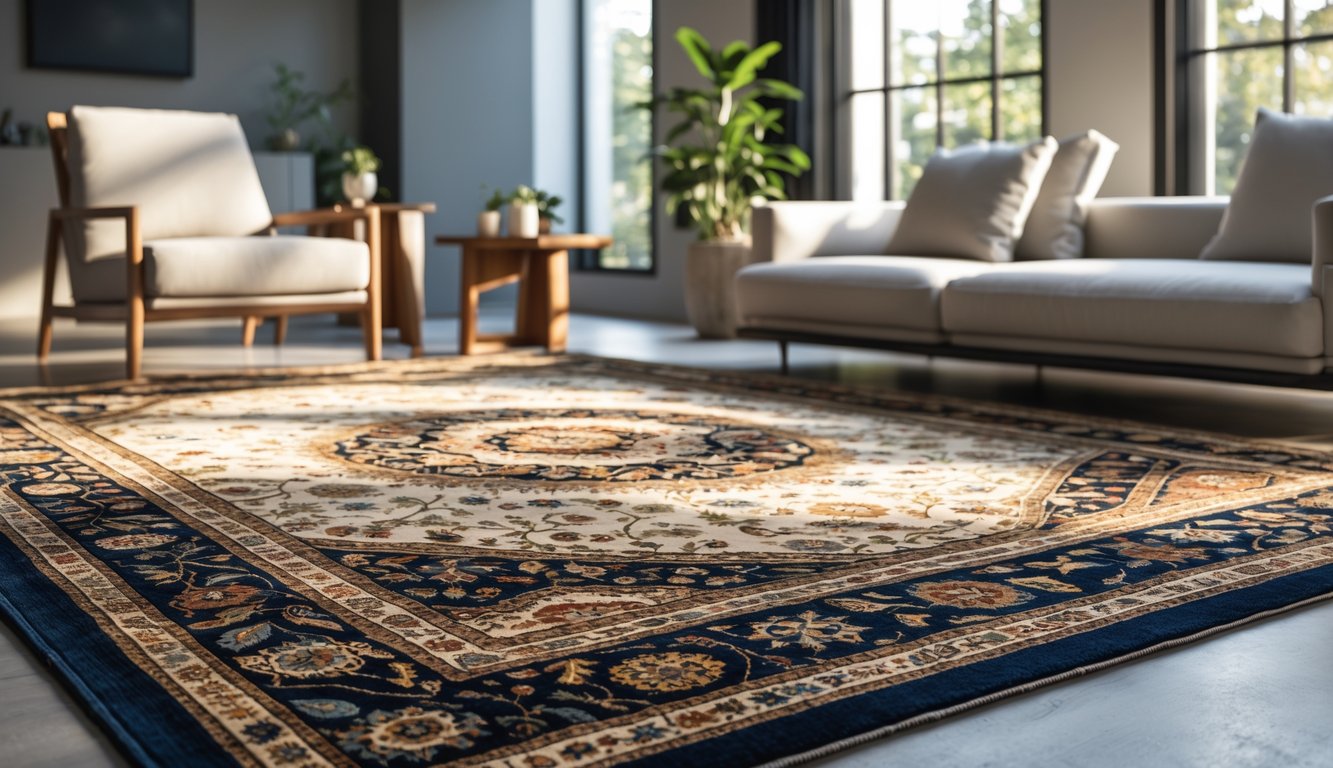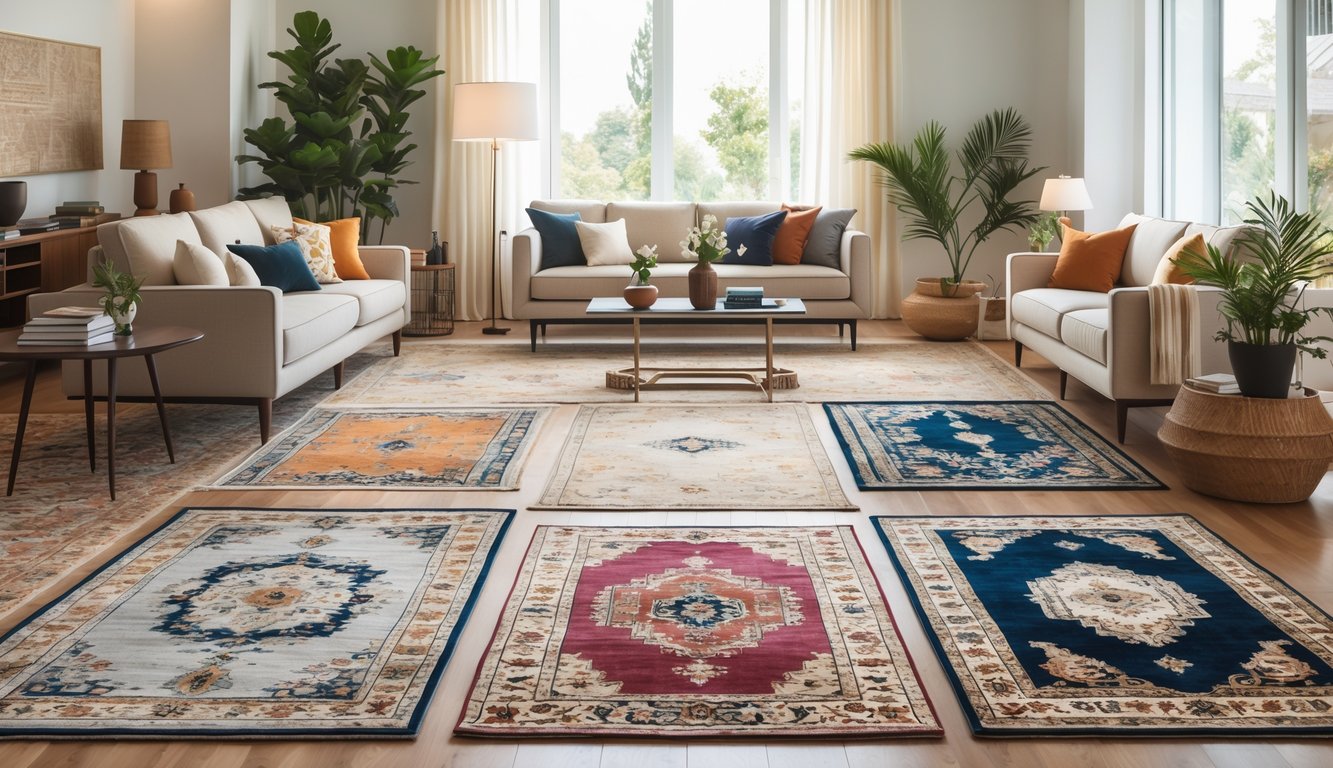
Okay, look, here’s what’s been making me lose my mind: every rug shop acts like saying “luxury” is some secret handshake, but nobody actually tells you which rug brands are worth even half the sticker shock. I’ve heard so many horror stories—edges unraveling, colors fading after one pathetic wash, or that weird plasticky texture that makes you want to wear shoes inside. But if you manage to get someone honest (and good luck with that), flooring folks will quietly admit that brands like Ruggable’s newer stuff, certain hand-knotted Persians, and a handful of modern “designer” types actually do earn their keep—yeah, not just the pretty factor, but actual durability and, I guess, ROI if you’re into that. (Someone on r/BuyItForLife went off about Ruggable’s upgrade—apparently the first batch sucked, but now? Total turnaround.) My neighbor, who treats knotted wool rugs like investment gold, claims only a few brands nail that dense, photo-perfect knotting you see in ads.
Time slows to a crawl and suddenly I’m knee-deep in conflicting rug wisdom from so-called experts on TikTok. Meanwhile, my own wool runner’s still alive after five muddy pets and, let’s see, at least three “deep cleans”—which by the way, ran me about $100 a pop (Today.com says that’s normal, so I guess I’m not getting ripped off). Why are expensive rugs back in style with designers when last year it was all about cheap and cheerful? I’m guessing it’s because stuff like labor, intricate patterns, and regional tradition still actually matter. Arrant Luxury flat-out says things like silk, handspun wool, and where the rug’s made crank up the price for a reason—but, please, don’t tell my brother, he thinks everything’s just overpriced because of Instagram.
And let’s be real: “expensive” doesn’t automatically mean “better.” Learned that the hard way with a $2,000 “artisan” rug that stained if you looked at it sideways. My carpet cleaner’s whole philosophy is: avoid low-density rugs unless you want bald spots before the year’s out. Can you trust online reviews? Not really. But after trading disaster stories with a pro appraiser, I’m convinced you can spot the good brands if you ignore the hype and actually look at how the thing holds up after years—not weeks—of real-life mess.
What Makes a Rug Brand Worth the Higher Price

Half the time I’m pretty sure these “luxury rug” brands just slap on an extra zero for fun, but then—wait, the pile’s thick, it doesn’t mat down, patterns actually match up (even on the back), and even the dog can’t destroy it. I’ve skimmed enough textile industry blogs (real ones, not TikTok hacks) to say the difference is obvious if you care to look, but there’s no one-liner shortcut for quality. Sorry.
Quality of Materials
Why does every sales rep act like “100% wool” or “hand-carded silk” is a lottery win? Because, marketing aside, the good fibers actually last, resist stains, and don’t feel like plastic under your feet. I found out the hard way—cheap synthetics get gross and flat, especially where people walk the most. That jute runner I bought on a whim? Looked like soggy lettuce by month three.
New Zealand wool, real silk, bamboo silk—yeah, they cost more, but if you want something that survives more than one holiday season, that’s the ticket. Even the best synthetic blends (Mohawk, Karastan, whatever) can’t outlast a real hand-knotted wool or silk rug. The brands charging more usually buy from legit suppliers—ask, and a good shop will even show you the paperwork.
If you spot “viscose” or “art silk” on the tag, run. Those fall apart, lose their shine, and pill—honestly, just a nightmare if you want your living room to look decent. I’ve swapped out “bargain” rugs for real wool and, weirdly, ended up spending less after a few years. The sticker shock upfront? It makes sense once you’re not replacing the rug every six months.
Attention to Design and Craftsmanship
Here’s what drives me up the wall—do you notice how some brands obsess over borders and details? Not just the main part, but the edges, the back, even the knots—Tufenkian and Jan Kath do that. I counted twelve different colors in one Nanimarquina rug. Machine-made stuff? Four or five colors, tops, and not a hint of subtlety.
Hand-knotted or hand-tufted always beats those cheap loomed rugs; the knots per square inch (KPSI) can be ten times higher. One dealer actually handed me a magnifying glass to show off individual knots—felt like I was in a crime show, but for rugs.
If you flip the rug and the back looks as crisp as the front, that’s legit quality craftsmanship. Cheap brands just print the pattern on, and it vanishes after one cleaning or the edge shreds in a year. Ever tried lining up a “budget” geometric rug in your living room? Good luck—the wonky lines will haunt your dreams.
Longevity and Durability
If you’ve ever tried to get red wine out of a cheap polypropylene rug—and failed spectacularly—you already know why durability is everything. The best rugs have a crazy-tight weave, strong yarn, and a heavy base. This isn’t just about “heirloom” bragging rights. My designer friend swears some Persian or Tibetan rugs outlive the people who buy them (and barely fade). A lot of brands talk big about longevity, but almost none back it up with real warranties or a history of actually repairing rugs for decades.
Dense weave—like, above 200 KPSI—means it’ll survive chair legs, pets, sun, and even your worst cleaning habits. I’ve seen secondhand rugs from top brands sell for more than new cheap ones; the junky ones, nobody even wants for free. Repairs on the good stuff? Usually cheaper than buying new, which says a lot.
Industry people (and guides) say if your rug keeps its color, pile, and shape for years, you got your money’s worth. I’ll take a faded but solid Oushak over a bright, crunchy polyester rug any day. No spreadsheet, no influencer post, nothing beats the real-life proof right under your feet.
Expert-Recommended Rug Brands That Justify the Investment

People love to rant about cheap rugs that shed, curl, and stain, then spend twice as much replacing them a year later. Makes no sense. Paying more for a good brand isn’t just about showing off; it saves your sanity and your feet.
safavieh
Let’s talk Safavieh. Their catalog is endless. I once lost an entire night scrolling through patterns, hopped up on coffee, unable to pick between that plush Hudson Shag and some geometric flatweave. Ignore the myth that “pretty rugs” are always fragile—designers (like Erin Gates, who basically runs the internet) rave about Safavieh’s power-loomed synthetics surviving everything from pets to spilled wine.
Stagers drag these through Manhattan apartments and they somehow fluff back up after being trampled by movers. There’s often a strong wool smell for about a week—honestly, not my favorite—but the spill resistance is worth it. Price-wise, you’re not usually paying more than your sofa, which is rare. Wirecutter’s best area rugs review ranks Safavieh super high for durability and patterns people don’t regret.